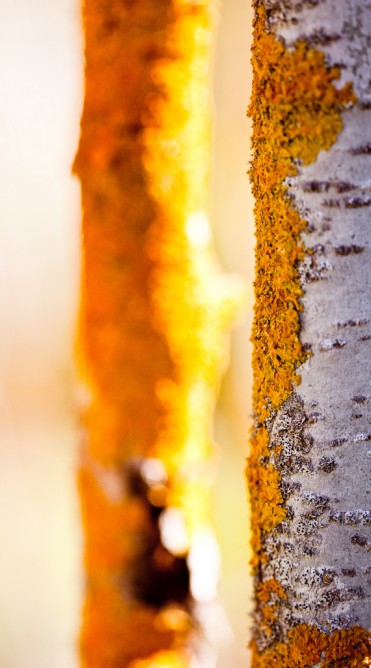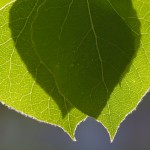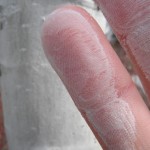“But, why?” These may not have been the very first words I uttered as a child but, much to my parents’ chagrin, these were certainly my two favorite words to say, repeatedly, incessantly. To this day, they remain a daily inquiry. Not to say it’s a bad thing, I owe these two little words a lot. They gave me the foundations for a career in science which is where those people that happily ask more questions than they answer congregate.
As part of a personal practice, as well as a component of the Biomimicry for Designers class that I teach in the Sustainable Design Program at the Minneapolis College of Art and Design, I attempt to quiet the “but, whys” for a moment or two each week while immersing myself in nature (and I ask my students to do the same). I literally have to force my mind and thoughts to slow down, just for a few minutes. Man, it’s a struggle sometimes. I don’t know how monks do it. Just to take the time walk to my local park and to sit still and stop thinking, stop searching for answers, takes a herculean effort on my part. It is counter to my rigorous training in “multitasking” (or perhaps more truthfully, “attention-splitting”). But when I do it, I mean really actually slow down, breathe, and awaken all of my senses, it is worth it and this is an understatement. The sensation is almost indescribable because I finally begin to see, feel, smell, taste, and hear answers that I wasn’t able to before. This act of “quieting our cleverness”, as Janine Benyus describes it in her seminal book Biomimicry: Innovation Inspired by Nature (1997), lies at the heart of biomimetic design. Biomimics use design principles and patterns learned from nature and make their designs with a clear intention to create conditions conducive to life.
Channeling Pando
This week as I wrestled with my mind to take a load off in my weekly sojourn to the woods, I decided to focus on one of my favorite species on the planet, the Quaking Aspen (Populus tremuloides). [Note: they are called quaking aspen because their leaves have a specialized petiole (the place where the leaf attaches to the branches) that allows them to tremble and wave in the slightest breeze. Some scientist speculate that this is a mechanism permits sunlight to penetrate through the tree’s canopy and dapple onto all of its leaves as well as the softly green, photosynthetic bark of the youngest trees. Wait, sorry, I just regressed back to answering my “but, whys”.]
In the spring, I find the cool, green-grey bark of the youngest members to have a calming effect on me, in the summer I feel electrified when their small, spade-shaped leaves shiver like a tambourine’s zils overhead, and in the fall I am in awe of a entire stand’s ability to turn its leaves golden en masse. I am captivated by the fact that all individual aspen stands (colonies) are clones -genetically identical copies of each other- that share one root system. Even more astounding is the aspen affectionately named The Trembling Giant, or Pando, the oldest organism on the planet that has had at least 80,000 birthdays and who lives in Utah.
After about 20 minutes of resting my mind and breathing in my surroundings I felt compelled to touch the young aspen tree’s smooth bark. I was surprised to feel a thin layer of the bark give way and leave a dusting of confectioner’s sugar-like residue on my fingers. How long have I know these young trees? How many times have I walked through groves of these trees and never stopped to touch one? My mind was racing again. “But, why?” What is this powder for?
Why would these trees actually spend energy coating the very bark that is light-seeking in a white coating? We all know that when we wear white it’s cooler and reflects light, right? Doesn’t this seem counter-intuitive? Now I was really curious. After a bit more investigation -taste-testing, smelling, scraping, sketching, note-taking- I left my place outside and walked home, all the while brainstorming possible reasons for this chalky substance. Was it to reflect light back up to leaves? Was it some sort of natural pesticide? Both? Neither?
When I got home, I combed through my natural history library and jumped onto the Internet. Turns out that the powder, the bark, the leaves, you name it, has been used as food and medicines for centuries. But, the most interesting information I found actually claimed that the powder could be used as sunscreen in a pinch. Sunscreen. Brilliant. Nature’s sunscreen.
A few days later I had the chance to revisit my park and I was astonished to notice a pattern that I hadn’t picked up on before. Many of the plants in the habitat had a soft sage-green color paired with a silvery-white color in their natural palette, just like the aspen trunks. It got me to thinking, what could we learn from these adaptations and patterns? Perhaps there is some advantage of dissipating UV radiation across a photosynthetic surface? Maybe this strategy could be applied to solar panels? Maybe our cars and homes could have a UV-sensitive coating that triggered the color of the car to transition to a lighter color on hotter, sunnier days and a darker color on cooler, darker days to be more energy efficient –dissipating heat and energy when in excess and capturing it when it is deficient? The possible sustainable and innovative design applications seemed endless. This is where it really gets fun to consider biomimetic designs, when the “but, whys” turn to “what ifs”.
Image courtesy of Flickr CC @JAR(). Leaf image courtesy of Flickr CC @Jenorton. Fingers and plant images courtesy of @Cindy Gilbert.


